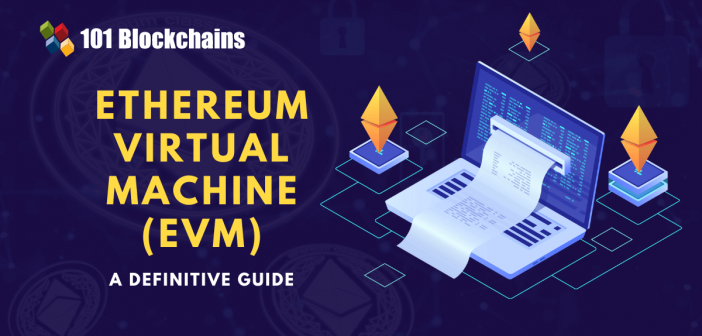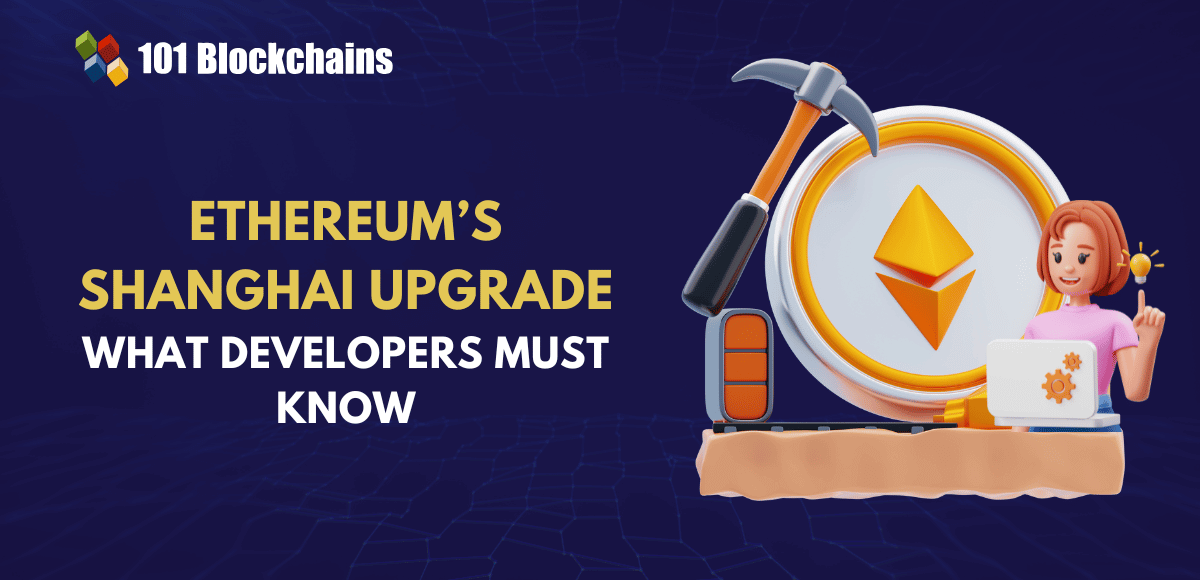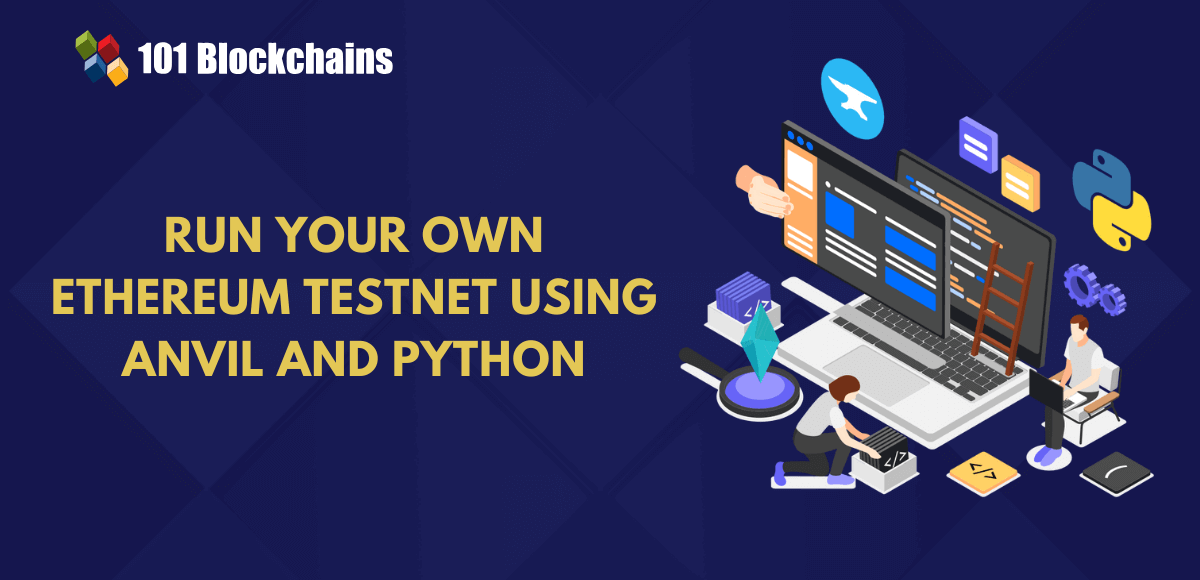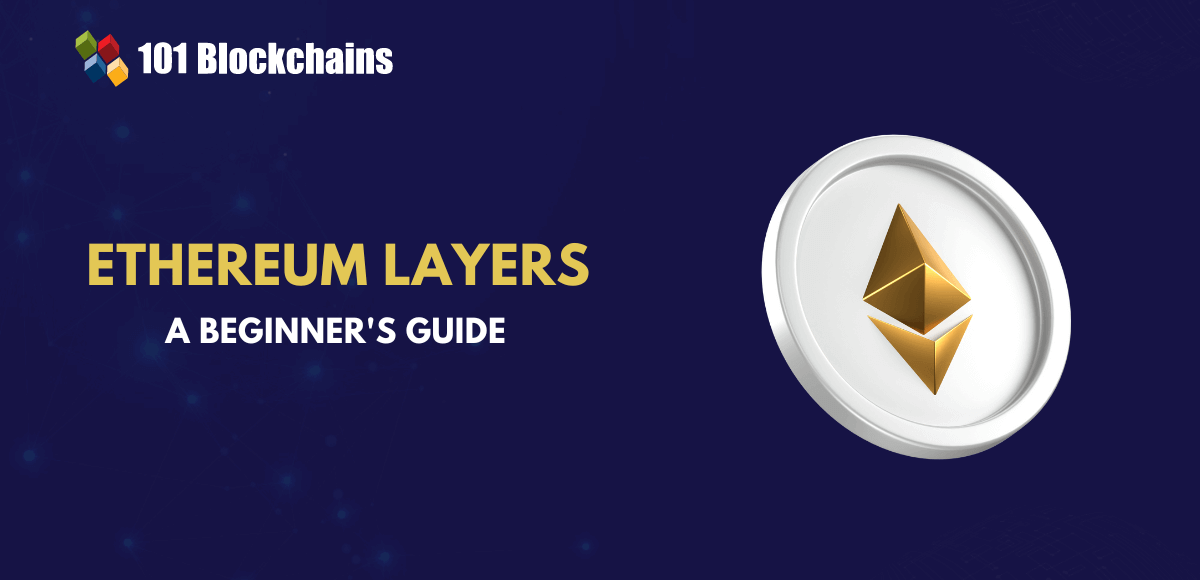Learn how blockchain truly works, master key definitions, and uncover what makes smart contracts so "smart." Dive into the fundamentals, gain valuable insights, and start your blockchain journey today!

- Ethereum
James Howell
- on November 18, 2022
What Is the Ethereum Virtual Machine (EVM)?
Ethereum is the blockchain network that introduced the concept of smart contract programmability. How does Ethereum provide the foundation for creating, compiling, and executing thousands of smart contracts? The answer would point to the Ethereum Virtual Machine or EVM. What is the significance of the Ethereum Virtual Machine in blockchain applications? It is impractical to describe the physical manifestation of the EVM, just like the difficulties in describing the cloud.
However, it still remains a single entity subject to maintenance by thousands of computers connected to each other. The Ethereum protocol ensures continuity, immutability, and seamless operations of the special state machine and offers an environment for all Ethereum smart contracts and accounts.
For any particular block in the Ethereum chain, only one ‘canonical’ state exists throughout the chain. It is important to note that the EVM provides definitions for the rules to govern the computation of new valid states from one block to another block. The following post offers a detailed guide on EVM blockchain and its working alongside benefits and setbacks. You can also reflect on the technical aspects which underline the Ethereum Virtual Machine.
Excited to build your skill in Ethereum development by leveraging the ethers.js library? Enroll Now in Ethers.Js Blockchain Developer Course!
Understanding Ethereum Virtual Machine
The first thing you need in an Ethereum Virtual Machine tutorial would refer directly to its definition. EVM, or Ethereum Virtual Machine, is generally assumed as one of the core elements in the working of Ethereum. It is similar to the heart in the human body, which works to distribute oxygen and necessary nutrients throughout the body through blood.
EVM offers the environment for creating and deploying smart contracts as well as dApps in the Solidity programming language. The Ethereum Virtual Machine, or EVM, serves as a ‘virtual computer’ or software platform utilized by developers for creating decentralized applications. EVM could also help in executing and deploying smart contracts on the Ethereum blockchain.
Excited to learn the basic and advanced concepts of ethereum technology? Enroll Now in The Complete Ethereum Technology Course
History of Ethereum Virtual Machine
Before reflecting on best practices for Ethereum Virtual Machine download, it is important to look at the history of EVM. Most of the people interacting with the Ethereum blockchain must have heard about Ethereum Virtual Machine at some point in time. Interestingly, you can develop a better impression of an EVM and its functions with an overview of its history.
Where did it all start? The creator of Ethereum, Vitalik Buterin, claimed that BitTorrent served as one of the earliest examples of dApps. BitTorrent was developed in 2001 by Bram Cohen, and the file-sharing protocol continues to remain active, even after so many years and multiple efforts to bring it down. How?
The parallels between ‘what is EVM in crypto‘ and BitTorrent are clearly evident in the network of computers distributed worldwide. If you truly want to stop BitTorrent, then you have to shut down every computer throughout the world, and the same applies in the case of the Ethereum Virtual Machine. Did you notice the point of similarity between BitTorrent and Ethereum Virtual Machine? Both of them are virtual machines without any physical limits.
Ethereum Virtual Machine does not need any high-end hardware assembly and serves as an ideal platform for beginners. On the other hand, you must learn about bytes, stacks, and many other blockchain concepts, such as proof of stake and hash functions, to learn more about EVM-compatible code as well as Ethereum Virtual Machine.
Build your identity as a certified blockchain expert with 101 Blockchains’ Blockchain Certifications designed to provide enhanced career prospects.
Is EVM a Distributed Ledger or State Machine?
The definition of an Ethereum Virtual Machine as a state machine creates doubts regarding its relationship with the distributed ledger of Ethereum. An Ethereum Virtual Machine implementation focuses primarily on determining the state of blocks on Ethereum. At the same time, EVMs also draw similarities with other blockchain-based networks as they utilize a distributed ledger for maintaining databases to facilitate transactions. Apart from the distributed ledger layer, EVMs also add another layer of functionality with smart contract features. The general term for the second layer is the ‘distributed state machine.’
Generally, blockchain networks such as Bitcoin or Ethereum have been referred to as distributed ledgers. These blockchain networks are primarily suited for enabling decentralized currency through the use of fundamental tools in cryptography. The distributed ledger would work on maintaining a record of transactions and other activities in alignment with specific rules for governing the privileges and behavior of users on the ledger. The rules apply to all transactions on Bitcoin as well as different blockchain networks.
Ethereum features its native cryptocurrency, Ether, for adopting the exact intuitive rules for governing the blockchain. At the same time, Ethereum also guarantees the powerful function of automation through smart contracts. Now, you can identify the EVM blockchain, i.e., Ethereum, as a distributed state machine.
The state of Ethereum is a large data structure capable of holding all balances and accounts as well as the machine state. The machine state could transform from one block to another block on the grounds of a specific set of rules. In addition, the machine state could also make the most of flexibility in the execution of arbitrary machine code. The EVM defines the rules that could govern the changes in state from one block to another.
Functions of an EVM
The next important thing you need to understand, ‘what is EVM crypto,‘ would point to the functions you can achieve. From the most basic perspective, Ethereum Virtual Machine functions as a massive database for storing all the accounts and balances on the Ethereum blockchain. Furthermore, the EVM also works as a machine state with the capabilities for executing machine code and adapting according to the addition of new blocks in the blockchain ledger.
You can think of the Ethereum Virtual Machine as a processing engine as well as a software platform, working as a decentralized computer. Developers could use the EVM for creating dApps, DeFi solutions, and many other crypto apps, such as play-to-earn games and NFT marketplaces such as OpenSea. Interestingly, developers don’t have to switch between platforms or programming languages as EVM offers the facility of creating your dApps on Ethereum with the EVM-compatible Solidity programming language.
An Ethereum Virtual Machine tutorial would also shed light on how EVM is an integral part of the Ethereum network. It is an important component in the Ethereum network, which takes on the responsibility for executing and deploying smart contracts. The Ethereum blockchain is a massive peer-to-peer network made up of various nodes which are connected to each other. Every node has to bear the responsibility of safeguarding the stability and security of the entire blockchain ecosystem. Nodes have to rely on the EVM to address their responsibility and maintain consensus throughout the Ethereum blockchain network.
Aspiring to Become a Certified NFT Expert? Enroll in Certified NFT Professional (CNFTP) Course Now!
Working of EVM
One of the notable questions that accompany an Ethereum Virtual Machine download revolves around the working of EVM. The Ethereum Virtual Machine works just like a mathematical function, as it can generate a deterministic output for any given input. As a matter of fact, you can formally describe Ethereum with a state transition function as follows,
Y(S, T) = S’
In this case, the old valid state, represented by S and the new set of valid transactions or T, could be subject to the state transition function Y. Now, the state transition function takes the two factors as Y(S, T) and generates the new output state, i.e., S’.
The two noticeable elements in the description for the working of Ethereum Virtual Machine refer to state and transactions. First of all, the state in EVM is a massive data structure, also known as a modified Merkle Patricia Trie. The data structure maintains a record of all the accounts associated with each other through hashes. Furthermore, the state in EVM blockchain functions could also be bridged down to a specific root hash on the Ethereum blockchain.
Another crucial element visible in the working of EVM refers to transactions. Transactions refer to the instructions from different accounts featuring cryptographic signatures. EVM supports two distinct variants of transactions, with one resulting in message calls and the other one dealing with contract creation. Contract creation could lead to the development of a new contract account featuring the compiled smart contract bytecode. The contract would execute the featured bytecode when another account makes a message call to the concerned contract.
Familiarize yourself with the second-most-popular blockchain network and Ethereum by Joining Ethereum Skill Path.
Working of EVM Instructions
A description of the working of the Ethereum Virtual Machine in blockchain would also focus on EVM instructions. Ethereum Virtual Machine goes through the execution phase in the form of a stack machine featuring a depth of around 1024 items. Every item in the stack machine is a 256-bit word, which facilitates better usability with 256-bit cryptography. For example, EVM execution does not enter into conflicts with secp256k1 signatures or Keccak-256 hashes.
Over the course of the execution process, EVM facilitates a transient memory in the form of a word-addressed byte array. The transient memory is not permanent between transactions. However, contracts feature a Merkle Patricia storage trie in the form of a word-addressable word array. The storage trie is associated with the concerned account as well as with the global state. Finally, the compiled bytecode would go through execution in the form of multiple opcodes. In addition, EVM could also implement various blockchain-centric stack operations.
Excited to learn the basic and advanced concepts of Ethereum, Enroll Now in Ethereum Development Fundamentals Course
What are Opcodes?
Opcodes are one of the integral aspects in any Ethereum Virtual Machine implementation, with almost 150 different Opcodes in Ethereum right now. The significance of opcodes in understanding EVM is evident in the identification of EVM as a Turing Complete system. EVM qualifies as a Turing Complete system on the basis of its ability to execution of machine-level instructions or opcodes.
The opcodes supported on EVM help it in accomplishing particular tasks associated with smart contracts or EVM crypto transactions. Opcodes could work effectively for multiple tasks, including data logging and arithmetic tasks, as well as retrieving block information. It is also important to remember that opcodes are not scripted directly in EVM and could help developers create smart contracts and interact with them effortlessly.
Benefits of Ethereum Virtual Machine
The guide to Ethereum Virtual Machine download must also reflect on the advantages associated with an EVM. One of the most striking advantages of the Ethereum Virtual Machine is evident in the form of EVM-compatible blockchains. The growth of Ethereum as a preferred choice for developing dApps has created the problems of slower transactions and high gas fees.
Therefore, developers opted for creating dApps on other permissionless blockchain networks. EVM-compatible blockchains could provide a solution for enabling interoperability between dApps and other blockchain networks based on EVM principles. Some of the notable names in the blockchain ecosystem with EVM compatibility include Avalanche, Tron, Cardano, and Polygon.
In addition, you can also explore many other benefits beyond EVM blockchain interoperability. Users can enjoy the seamless movement of assets between EVM networks alongside enabling better ease for portability of dApps. On top of it, interoperability could also offer the assurance of lower barriers to entry of Ethereum developers.
Use Cases of EVMs
The definition of EVM and its working could help you visualize its potential applications. How does it power actual projects? You can find answers to “what is EVM crypto” in ERC-20 tokens developed through smart contracts. The data structure associated with the smart contracts of ERC-20 tokens supports the naming, distribution, and monitoring of tokens. Interestingly, the ERC-20 tokens can serve more significant roles beyond serving as EVM crypto. The scope of EVM also includes ERC-721 tokens, which have fuelled the rise of NFTs. Some of the other use cases of EVM refer to DAOs which offer an independent organizational structure.
Get familiar with common Ethereum terms with the Ethereum Flashcards
Bottom Line
The Ethereum Virtual Machine tutorial reflected on multiple factors related to EVM, starting from its definition to how it works. As the name implies, EVM is a virtual machine, albeit a bit different in terms of its operations and structure. The virtual machine encompasses the state of multiple computers connected to the network.
In addition, you can also perceive EVM as a flexible and easy environment for creating and deploying smart contracts. The working of EVM as a state machine with a transition function involving transactions and state to generate the new output state. Dive deeper into the technicalities of Ethereum Virtual Machine with a comprehensive training course on Ethereum technology now.
*Disclaimer: The article should not be taken as, and is not intended to provide any investment advice. Claims made in this article do not constitute investment advice and should not be taken as such. 101 Blockchains shall not be responsible for any loss sustained by any person who relies on this article. Do your own research!






